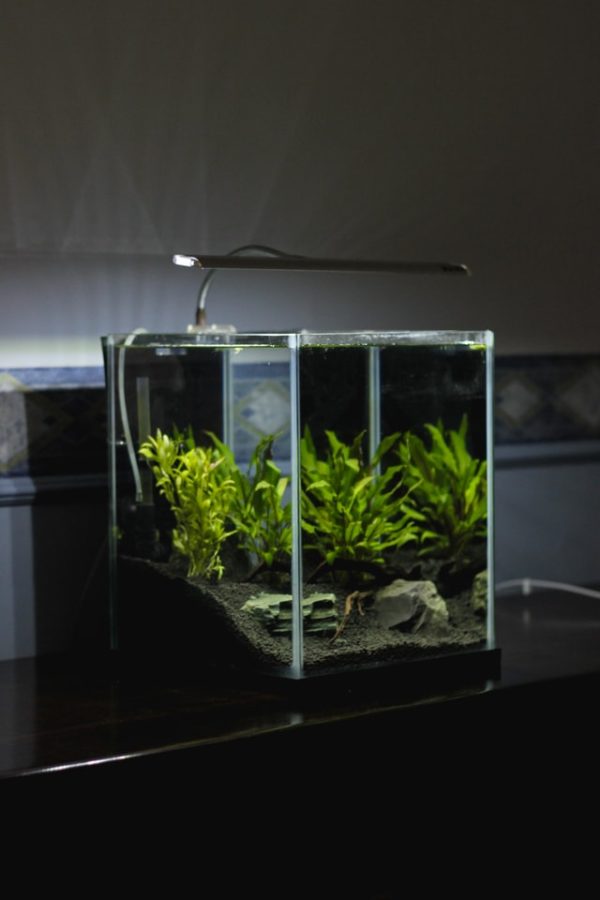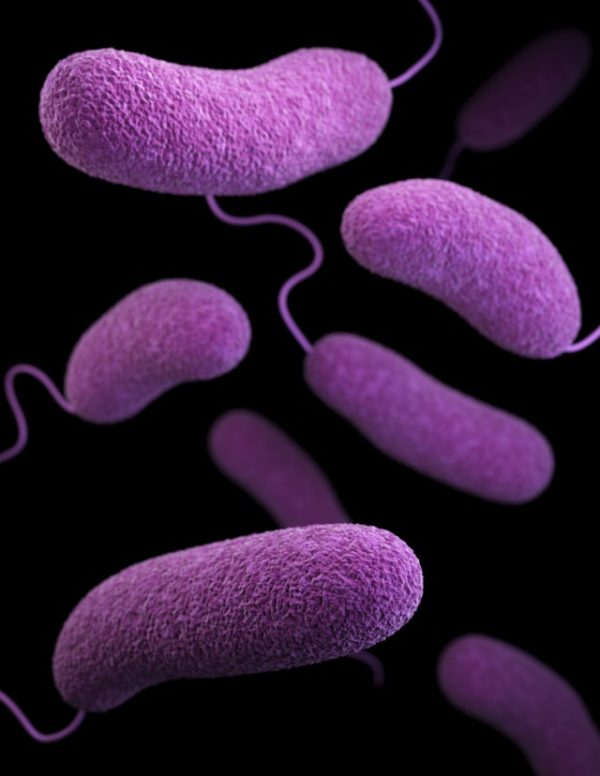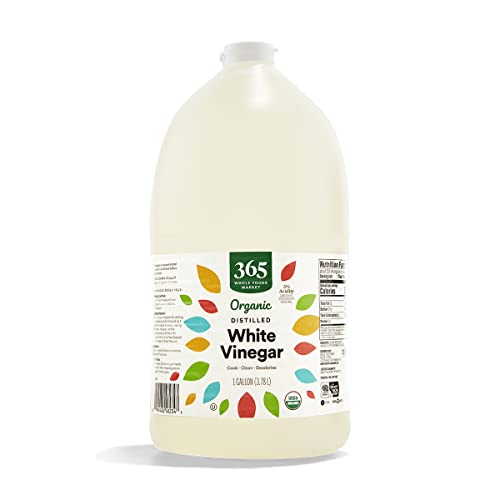We earlier talked about cleaning a turtle tank with vinegar. But, what about fish tanks? Can you use different types of vinegar to clean the waste out of the community aquariums?
As complicated as it might seem right now, the process of how to clean a fish tank with vinegar is not as complicated as you think. Easy steps and safety measures clean your tank and keep your fish in their prime health.
This article will discuss the safety precautions with using vinegar for fish tanks and how you can use it to clean the inside and outside of the tanks.
Table of Contents
Which Types of Vinegar Are Safe to Clean a Fish Tank With?
While it’s safe to clean your fish tank with vinegar, introducing vinegar to the tank water with the fish can be fatal. It can severely change the pH levels and make the water too acidic for the fish.
However, aside from proper safety and precaution, you shouldn’t face any issues while cleaning the tank.
Coming to the types of vinegar you can use, there are three primary types. You have:
- White vinegar
- Apple cider vinegar
- Malt vinegar
Out of the three, white vinegar is the most commonly used cleaning agent. Besides the accessibility, white vinegar is also the cheapest of the lot.
Let us discuss each of this vinegar in detail.
1. White vinegar
Touted as the most accessible and affordable type of vinegar, white vinegar has 5% more acidity than water. The low acidic levels make it ideal for cleaning fish tanks without imposing risks to the fish’s health.
Also, since white vinegar is transparent, you won’t have to worry about staining the inside or outside of your tank, which is a bonus. However, despite how much vinegar you use, you have to take out the fish and the plants before cleaning with vinegar.
– – –
2. Apple cider vinegar
Known for its impacts on weight loss, apple cider vinegar has become a household staple. So, if you are considering cleaning your fish tank with apple cider vinegar, you can reach out for these. The vinegar is made by fermenting the apple with yeast, which gives it a distinct flavor profile.
If you don’t enjoy the pungent smell of white vinegar, apple cider vinegar is a good replacement.
– – –
3. Malt vinegar
Last on the list is malt vinegar, an underrated and less available variant. The vinegar is extracted by fermenting barley, so the acidity is quite low in this one. It is likely the least potent choice out of the three.
Also, since malt vinegar has a dark brown color, you might risk staining your glass fish tank when you clean with it.
Despite the available variants of vinegar and its safety, we’d recommend using standard white vinegar. It is hands down the most potent and affordable of the three. The cleaning results are also the best with white vinegar since the high acetic acid level.
– – –
What Are the Advantages of Using Vinegar to Clean the Fish Tank?

People don’t always want to rely on chemicals for cleaning. Especially in sensitive cases like a fish tank, harsh chemicals can leave residue and change the water chemistry.
On the other hand, Vinegar is an all-natural ingredient obtained through the fermentation process. So, it isn’t surprising that it is a lot safer in comparison.
Following are some of the benefits of using vinegar for cleaning fish tank:
1. Safer and eco-friendly
If you are looking for safer and more sustainable ways to clean the fish tank, vinegar is the way. You acquire it from natural fermentation processes. Also, they don’t include synthetic chemicals in them, making them safer for fish and aquatic plants.
Since the acetic acid in the vinegar is naturally occurring, it reduces the risks of damage to the environment.
2. It doesn’t damage the fish tank
When you use commercial fish tank cleaners with chemicals, they can rust or erode the metal parts in the tank. With vinegar, you won’t have to worry about the same. All you have to do is clean the insides thoroughly under running water to wash away any residue.
3. Accessible product
Every household has one or the other type of vinegar available. This reduces the hassle of going to the market to buy a different cleaning product. Whenever you feel like cleaning the fish tank, you can go around in the pantry and get the vinegar.
4. Gets rid of bacteria and germs

Bacterial and germ colonies inside the fish tanks are common. While you do need some level of bacterial growth for the ecosystem, the excess is completely futile and harmful for the fish. A quick scrub with vinegar can eliminate them all without any issues. Vinegar is a natural disinfectant, which is promising.
5. Eliminates algae
Algal deposition in excess will disturb your fish tank’s ecological balance. Vinegar has acetic acid in it, which can eliminate the algae from the tank’s insides. The strong acidic property also prevents it from returning in the future.
6. Safe and easy to make
Many chemical formulas pose a threat to not just the fish but also the aquarist who comes in contact with the solution. The harsh chemicals have strong fumes, which, when inhaled, can be bad for the individual. You won’t have to worry about that with the vinegar solution.
Besides the safety, vinegar solution for cleaning a fish tank is easy to make. All you have to do is mix equal parts of vinegar and water, and it’s done.
How Much Vinegar Is Needed to Clean a Fish Tank?
There is no fixed or standard measure of the vinegar you need to clean your fish tank. Instead, it depends on the size of the fish tank and the accumulated dirt inside.
Besides how much you need, always keep the water to vinegar solution as 1:1. So, you should mix equal parts of vinegar and water for optimal cleaning results.
If you want a “lazy” hack, fill the tank with a 1:1 water and vinegar solution and leave it aside for an hour. Once done, you can then empty the tank and scrub down the inside and outside of the tank with a scrubber.
Cleaning a Fish Tank with Vinegar: Steps
For easy cleaning with vinegar, follow the steps mentioned.
1. Empty the Fish Tank
Before you start cleaning, you have to clear out the contents of the fish tank. This includes the different fish species, aquarium plants, and decorations.
Also, since fish species are sensitive to water change, we’d recommend preparing a separate bucket with all the right water parameters to place the fish in. You can keep them in the tank water that you are throwing out.
Keep the plants and the equipment on a clean surface. You have to clean them individually before reintroducing them back to the cleaned tank.
2. Use the Vinegar Solution
The next step is to make your vinegar and water solution. This will depend on the tank size. If you have a 20-gallon tank, you’d have to make a 1:1 vinegar-water solution to cover the tank.
It sounds like a lot of vinegar, but the results are worth the investments and efforts.
Once you make the water and vinegar solution, pour it into the fish tank and leave it in for 30-60 minutes.
Also, if you are cleaning the tank by adding vinegar gradually, avoid scrubbing it right after adding the vinegar. This will strip the shine of the glass and leave scratches.
3. Scrub the Insides
Get in with a scrubber once your tank has soaked for 30 minutes. You can use a soft-bristled scrubber to clean the dirt and the algal deposition inside the tank.
Try to get in as much as you can, reaching every corner of the tank. Sometimes, the corners have the most accumulated dirt trapped in them.
You can also use toothbrushes to reach the difficult corners of the tank. They come a lot handy in such cases.
4. Work on the Hard Water Stains
Notice the white stains all over the tank? Those are the hard water stains. The vinegar should react with them, and a quick scrub can clean them out.
The white cast is generally calcium build-up. So, a quick scrub can release it from the inside of the fish tank. In case that doesn’t work, you can use an algae scraper.
5. Dry and Set-up
Once you are happily cleaning the inside and outside of the fish tank, the last step is to wait. You have to wait till the tank dries before you can add water.
Doing so ensures no vinegar residue can change the water chemistry. Also, when setting up the tank, ensure that you have all the necessary water parameters sorted.
This includes the temperature, pH, and hardness of the water. Also, you’d have to reintroduce the fish and aquarium plants and décor.
How Do You Clean Aquarium Plants with Vinegar?
The question is, “Can you clean aquarium plants with vinegar?”
It depends on the types of plants you include in the tank. Ideally, we’d recommend that you research the plants first and then include them accordingly.
As for cleaning, you can use a diluted vinegar-water solution to clean any algal deposition or dirt from the plants. However, once you are done cleaning with the vinegar, we’d recommend that you clean it under running water to get rid of all the vinegar.
Can You Use Vinegar to Clean other Fish Tank Equipment?
Again, using vinegar for cleaning the fish tank equipment depends on the product itself. If you have plastic items, vinegar should be a safe cleaning agent.
However, if your decorations are made of metal, soaking them in vinegar for a longer period might corrode them. So, check with the instructions available with the decorations. You can check which tank equipment is vinegar-safe and which ones aren’t before using them.
Wrapping Up
Cleaning a fish tank with vinegar is not as complicated as it looks. With the right methods and products, you can easily clean your fish tank without using chemicals. The procedures might be a little tedious, to begin with. But, we’d recommend following the tips we mentioned in this article.
For further queries, leave us a comment, and we’d get back to you on it.



